Gilling Castle, the medieval stronghold and its journey through the Baroque to the 20th century
Gilling Castle, North Yorkshire — part of the Ampleforth Abbey Trust — is a medieval castle that underwent a Baroque conversion before having many notable 20th-century fittings. In the first of two articles on the castle John Goodall describes what happened. Photographs by Paul Highnam.


Gilling Castle does not obviously declare either its depth of history or its exceptional interest. It stands at the point of a steep-sided ridge overlooking the Vale of Pickering, yet the main front today decisively turns its back on the view and masks the architectural complexity of the building. To the modern visitor, therefore, who approaches up a densely wooded bank from the village beneath, the impression is not of a castle commanding its surrounds — a relationship only apparent from a distance (Fig 1) — but of a large, coherent Georgian country house enclosed by trees.
As it is initially revealed, the castle comprises a central block five window bays wide flanked by two strikingly long wings that terminate in pavilions, originally a library and Catholic chapel. The front is low, with a shallow basement and upper storey. Between them is a much deeper principal floor lit with tall windows. For all the relative simplicity of the design, however, the walls are of costly cut stone and the architectural detail carefully modulated to emphasise the central, entrance bay of the building.
Such outward restraint lends a theatrical flourish to the experience of walking up the spreading entrance stair and through the front door into the hall. This interior rises the full height of the building (Fig 2). Its stone-flagged floor is trimmed with black marble and the space is detailed with moulded plasterwork. A deep internal cornice demarcates a lofty, lower register to the room from a clerestory and vault above.
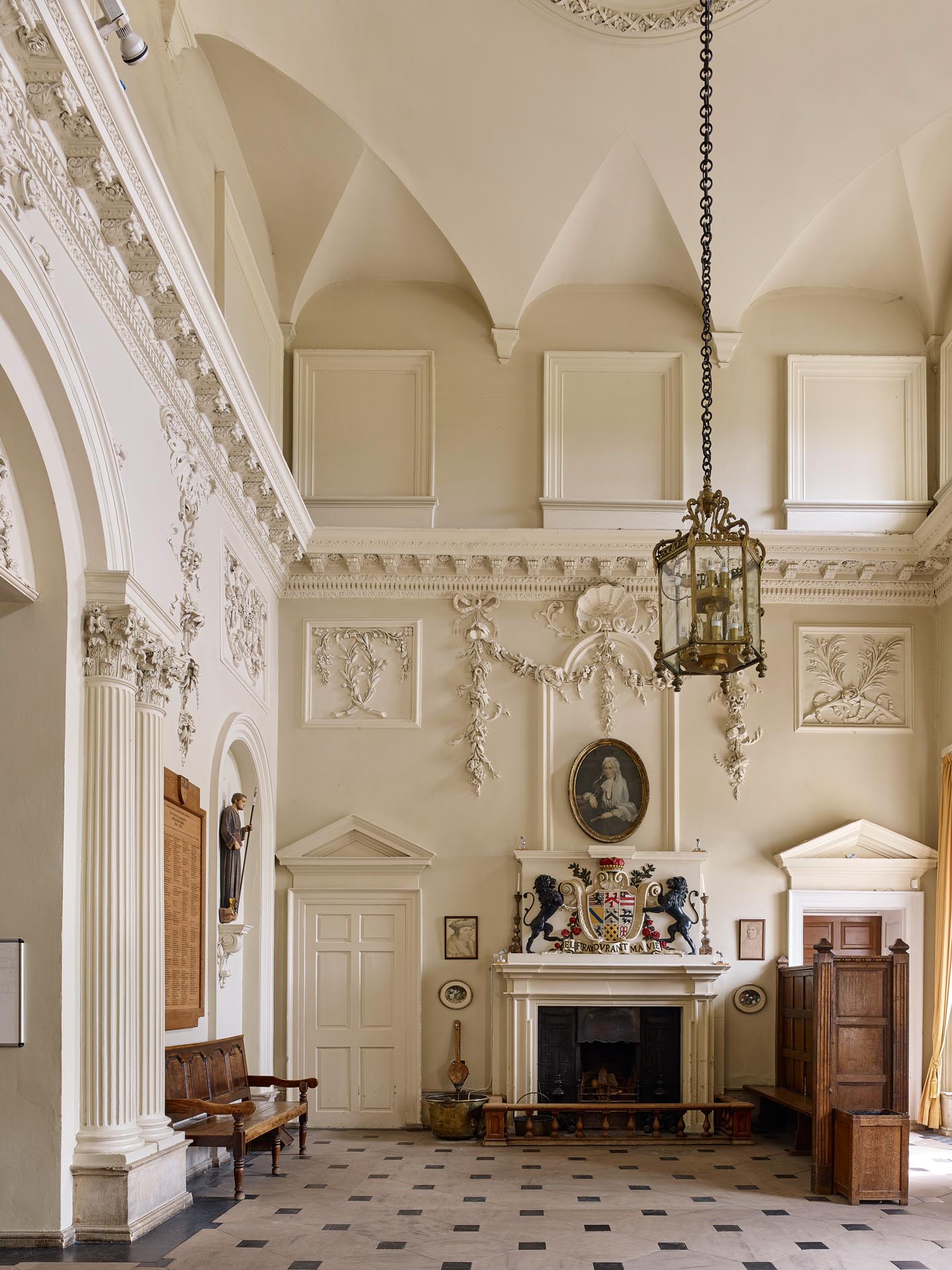
Facing the entrance is a wide archway that screens the main stair lobby from the body of the hall. To the left is another arch filled with the larger-than-life figure of a Roman general (Fig 4), who looks across the hall to its fireplace. The arrangement echoes the layout of Vanbrugh’s monumental hall at Castle Howard, although the conception more closely resembles contemporary halls at Bramham, Beningbrough, Towneley and Wentworth Woodhouse. A large armorial over the fireplace celebrates the alliances of the Fairfax family, in whose possession the castle descended — by rather convoluted means — from 1492 to 1885. It is surmounted by a viscount’s coronet, a dignity in the Irish peerage bestowed in 1629, and bears the family motto ‘I will do it all my life’.
The Georgian remodelling of Gilling formed part of a wider building boom that changed the architectural face of Yorkshire in the 18th century. When the antiquarian artist Samuel Buck toured the county between about 1719 and 1725, most of the gentry seats he drew in his sketchbook were rambling amalgams of different periods of building. Such was the case, for example, with nearby Newburgh Priory, a house owned by relatives of the Fairfaxes, the Belasyse family. His drawings also show that things were changing, as at neighbouring Duncombe Park, where the imposing Baroque house that was begun on a virgin site in about 1713 stood complete.
Frustratingly, Buck failed to sketch Gilling; possibly, it was a building site. That would certainly agree with the fact that the remodelling must have been initiated during the lifetime of William Fairfax, 8th Viscount, soon after he succeeded to the title in 1719. Confusingly, however, such was the Viscount’s incapacity that his son, Charles, took over the management of the estate in 1720 and it was he, presumably, who initiated the rebuilding. Both Viscounts were Catholics and Charles was educated by the exiled English Benedictine community at Lamspringe, near Hildesheim.
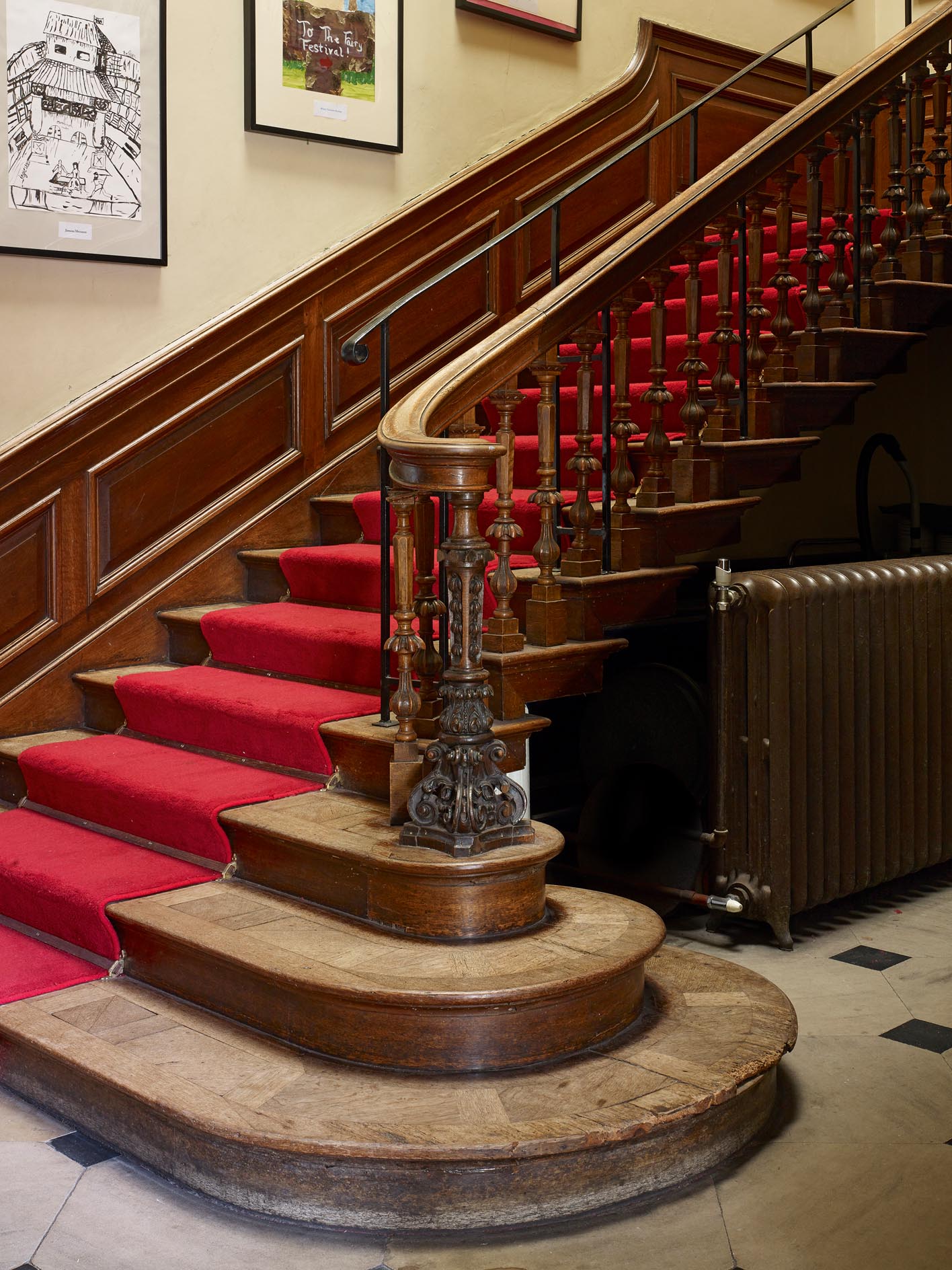
The first interiors in the new house seem to have been fitted out in 1730, including the hall, which received its fireplace that year from one James Thorp, and the chapel in the south-wing pavilion. When Charles inherited the title as 9th Viscount in 1738, however, major building operations were still under way. He continued to improve the house and grounds until his death in 1771 (they were admiringly described by Arthur Young that year), but the work was probably largely complete when he bought Fairfax House, York, in 1759, and modernised it for his daughter, Anne.
Sign up for the Country Life Newsletter
Exquisite houses, the beauty of Nature, and how to get the most from your life, straight to your inbox.
In his history of York, Eboracum (1736), the antiquarian Francis Drake incidentally identifies the designer of Gilling as a local gentleman, William Wakefield of Huby, commenting in a footnote that his ‘great skill in architecture will always be commended, as long as the houses of Duncombe Park and Gilling castle shall stand’. There seems no reason to doubt the essential truth of this attribution, but Wakefield can’t have been wholly responsible for the work we see today. Not only did he die in 1730, when work at Gilling was still under way, but other local specialists were clearly involved in the project and may have contributed to the design.
Richard Hewlings, for example, has plausibly suggested on comparative evidence that another important York builder, Robert Thornton (described by Drake as a ‘joiner and architect’), supplied the staircase that opens off the hall. This is a particularly fine creation with richly carved balusters and each tread supporting the one above it in a cantilever structure (Fig 3).
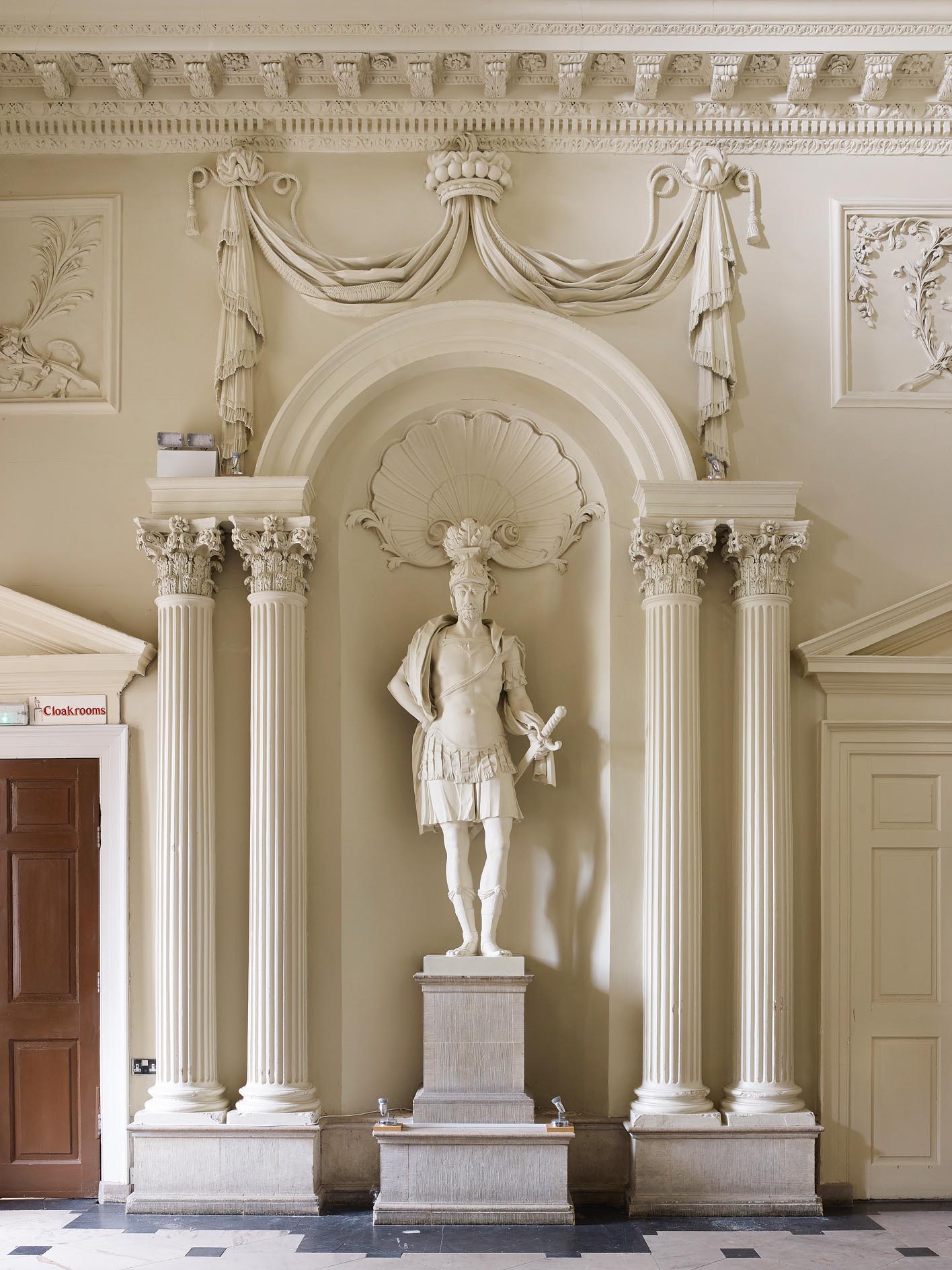
Another important contributor to the interior was the stuccodore Giuseppe Cortese, who was born Mendrisio, near Lugano, in 1704. His earliest documented English work was in 1739 at Newburgh Priory and surviving accounts show he was engaged at Gilling in the 1740s. He is assumed to have worked on the decoration of the hall (although that’s awkward if it was being fitted out in 1730) and was certainly involved in another lost interior, the gallery (Fig 9). The latter was being constructed in 1749, when the joiner Matthew Ward carved the ‘medals and heads and spandrel panels’ for the space. From 1755, the York architect John Carr worked at Gilling and then assumed responsibility for remodelling Fairfax House, together with Cortese.
One of the most surprising things about the Georgian remodelling of Gilling is the degree to which it was shaped by the building that pre-existed it. The central block of the house, for example, sits on the surviving basement of a 14th-century tower. This has long served as a kitchen and service area and is independently of great architectural interest.
In plan, the basement is more than 70 feet square, dimensions that place it in the first division of architectural patronage. Its interior is regularly organised with six vaulted rooms divided by a central passage and was apparently laid out using the measurement of a rod — a length of 16ft 6in — commonly used to quantify masonry in late-medieval building contracts. Within the depth of the outer wall are several passages, including three latrine chambers in the south wall.
There are two medieval doors to the tower basement at opposite ends of the central passage. Curiously, it was the smaller of these — formerly sealed with a portcullis and ornamented with the arms of the Etton family (Fig 5) — that appears to have served as the formal entrance to the building.
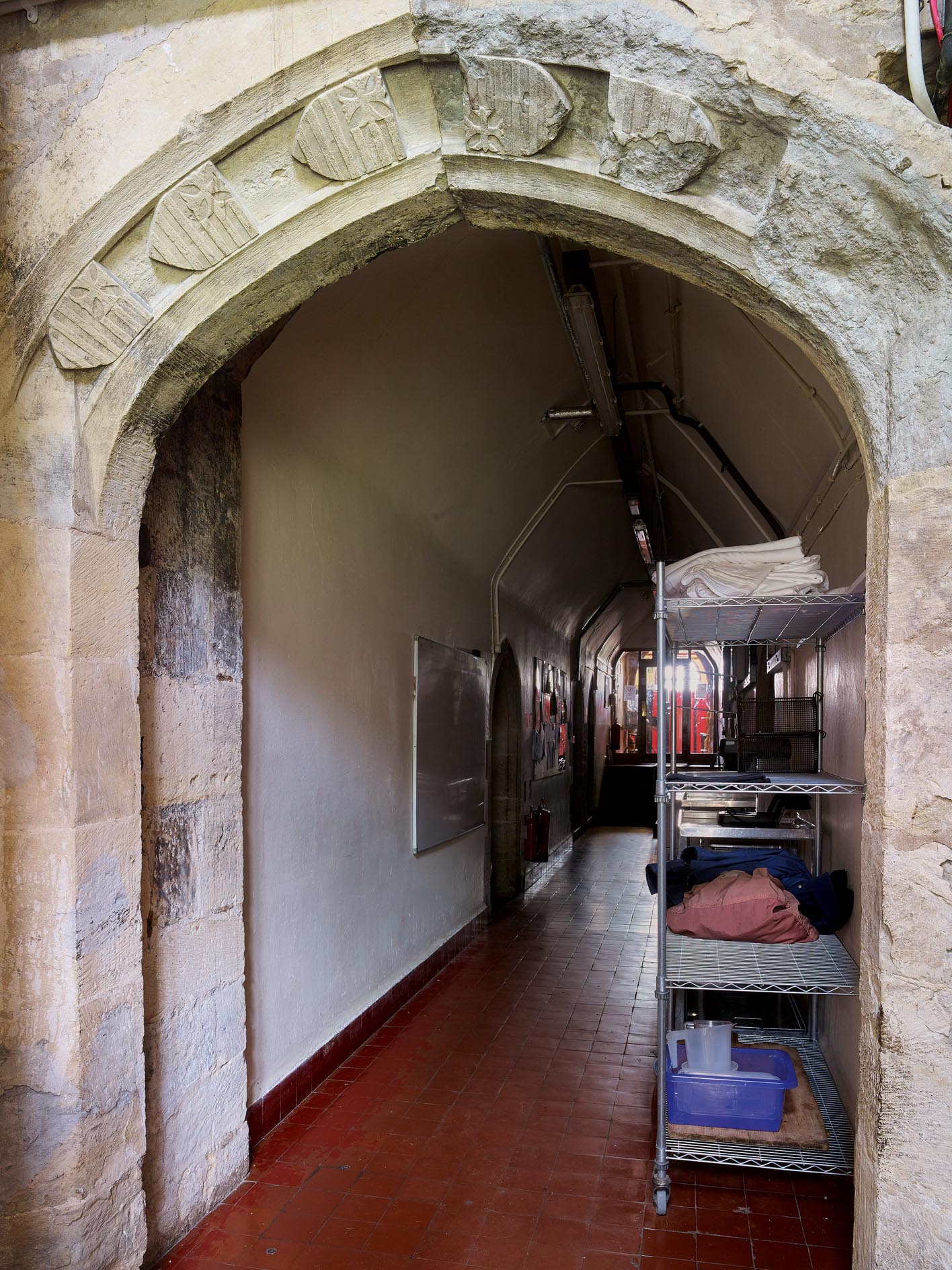
To enter the lost upper chambers of the tower, a medieval visitor passed through this door and walked the full length of the corridor before turning right up a broad stair at the far end of it. This stair presumably led up to a hall at first-floor level of the north side of the building (the outline of a tall window in the east wall is still visible in the masonry) and withdrawing chambers to the south.
This peculiar approach under the building, the use of rods to lay out the plan (in fact, a grid of half-rods) and such detailing of the interior as remains, including the use of pointed barrel vaults, would all agree with the work of the outstanding mason active in the North of England in the late 14th century: John Lewyn. That attribution would, in turn, comfortably correspond to the only plausible patron for this exceptionally grand structure.
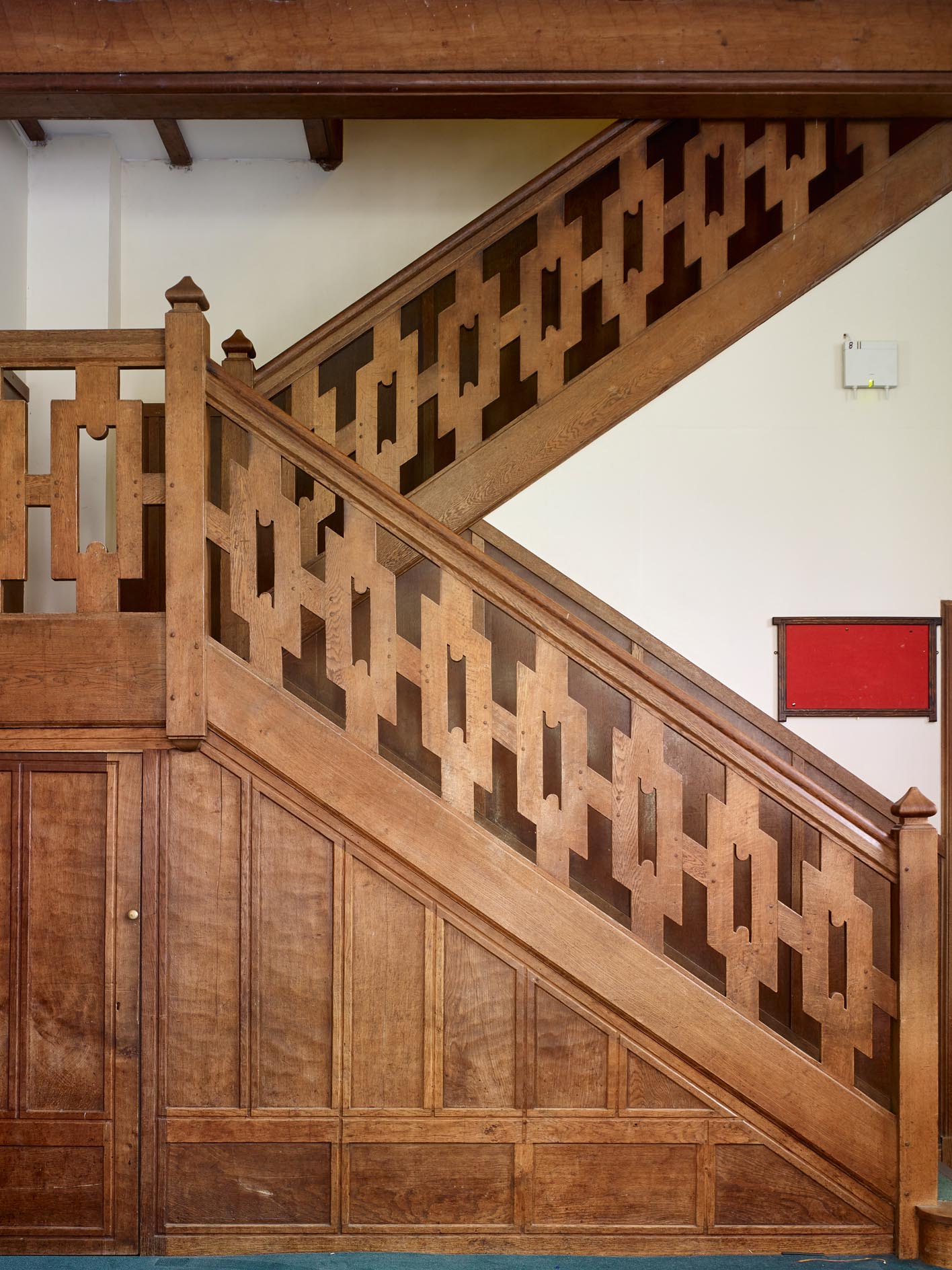
Thomas Etton (d. 1404) came from a Yorkshire family that had possessed land in Gilling since at least the early 13th century. From the 1360s, however, he enjoyed a notable career as a soldier and developed close connections both with John, Lord Neville of Raby (d. 1388), and their mutual patron, John of Gaunt, son of Edward III. From 1377 — following his impeachment by the House of Commons — Neville began to amass landholdings in Yorkshire, Northumberland and Durham and major building works not only at Raby Castle, Co Durham, but Sheriff Hutton, about seven miles from Gilling.
That the tower at Gilling is somehow connected with these projects in the 1380s is further implied by the fact that Thomas Etton brokered an extremely good match for his son with an heiress of William Everingham, whose estates were in Neville’s custody. Neville and Gaunt patronised John Lewyn in their building works in Durham and Northumberland. Lewyn also certainly worked in Yorkshire, at Castle Bolton, so, although his involvement at Sheriff Hutton and Gilling is beyond proof, it is not unlikely. Whatever the case, enough survives of Gilling to make it clear that this is a major 14th-century building about which we know too little.
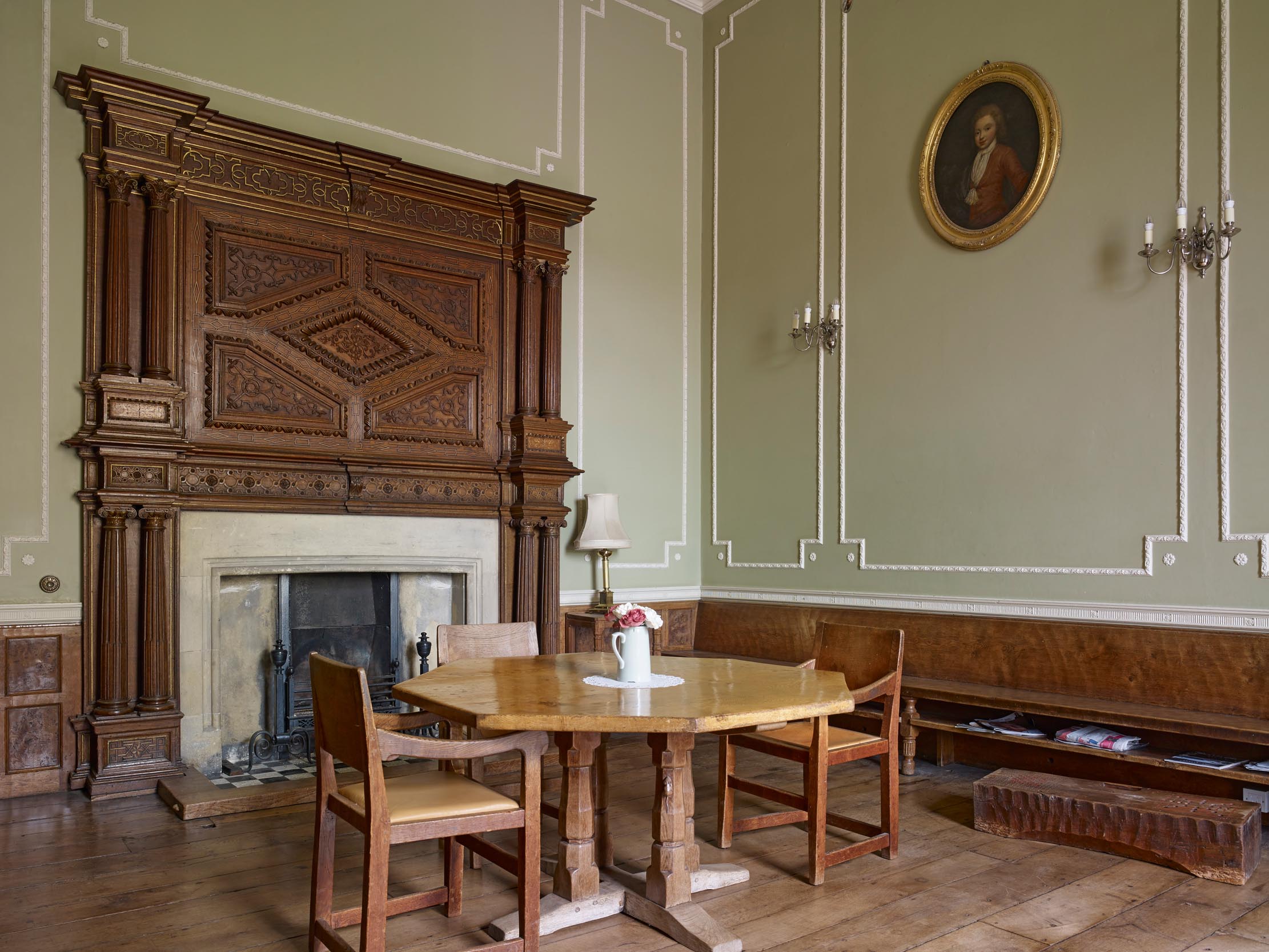
This tower clearly continued to form the centrepiece of Gilling after it passed into the hands of the Fairfax family — who claimed distant connection to the Ettons by intermarriage in the 14th century — in 1492. As well as modernising the tower interiors in the late 16th century, as we shall see next week, they also extended the building, possibly laying out parts of a service courtyard to the north. Two inventories of the castle taken in 1594/95 and 1624 describe a number of other chambers. Some of these, such as the ‘Pleasance’ and the ‘Paradise’, were probably located in the upper chambers of the tower.
There is intriguing mention of a ‘gallery and lodging’, too. These structures almost certainly stood on the site of the present south wing, which partly incorporates earlier fabric. If so, that might explain the unusual length of the wings, as well as the terminating pavilion — in this case the chapel — as the re-creation of the lodging. There are 18th-century parallels, of course, for terminating pavilions at the end of long wings, as, for example, in the proposed plans for the redevelopment of Hampton Court by Vanbrugh. What is curious at Gilling, however, are the canted window bays, which might echo late-Tudor architectural forms.
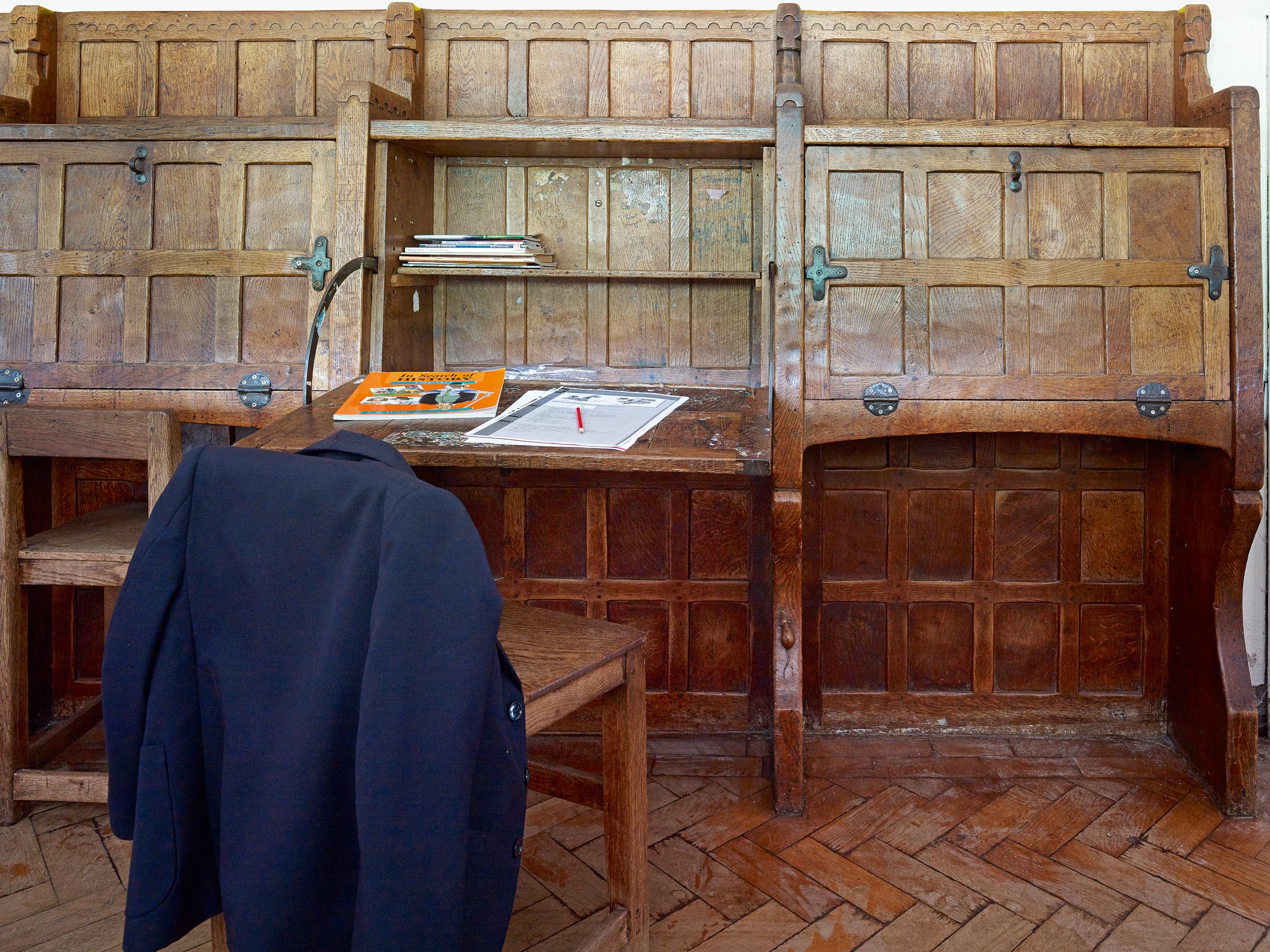
It’s impossible to admire the 18th-century interiors of Gilling today without acknowledging an important 20th-century phase of furnishing, which is easy to overlook and undervalue. In 1929 — by a complex chain of events set out in the published work of Fr Anselm Cramer reaching back to Sir William’s Benedictine education at Lamspringe — Gilling Castle became the prep school of Ampleforth College. During the sale, as we will discover next week, the castle was stripped of nearly all its historic fittings. To make good these losses and to adapt the interior for school use, the celebrated joiner Robert Thompson, known as ‘the Mouseman’ after the carved motif he used to sign his work, fitted out the building.
It is to Thompson that we owe, among other things, the settle beside the fireplace in the hall; the 1930s staircase (Fig 6) and window seats in the gallery; and the benches in the anteroom (Fig 7) between them. He also created the carrells that have weathered 90 years of hard use by prep-school children (Fig 8) in a well-considered classroom gallery added by Giles Gilbert Scott in the 1930s.
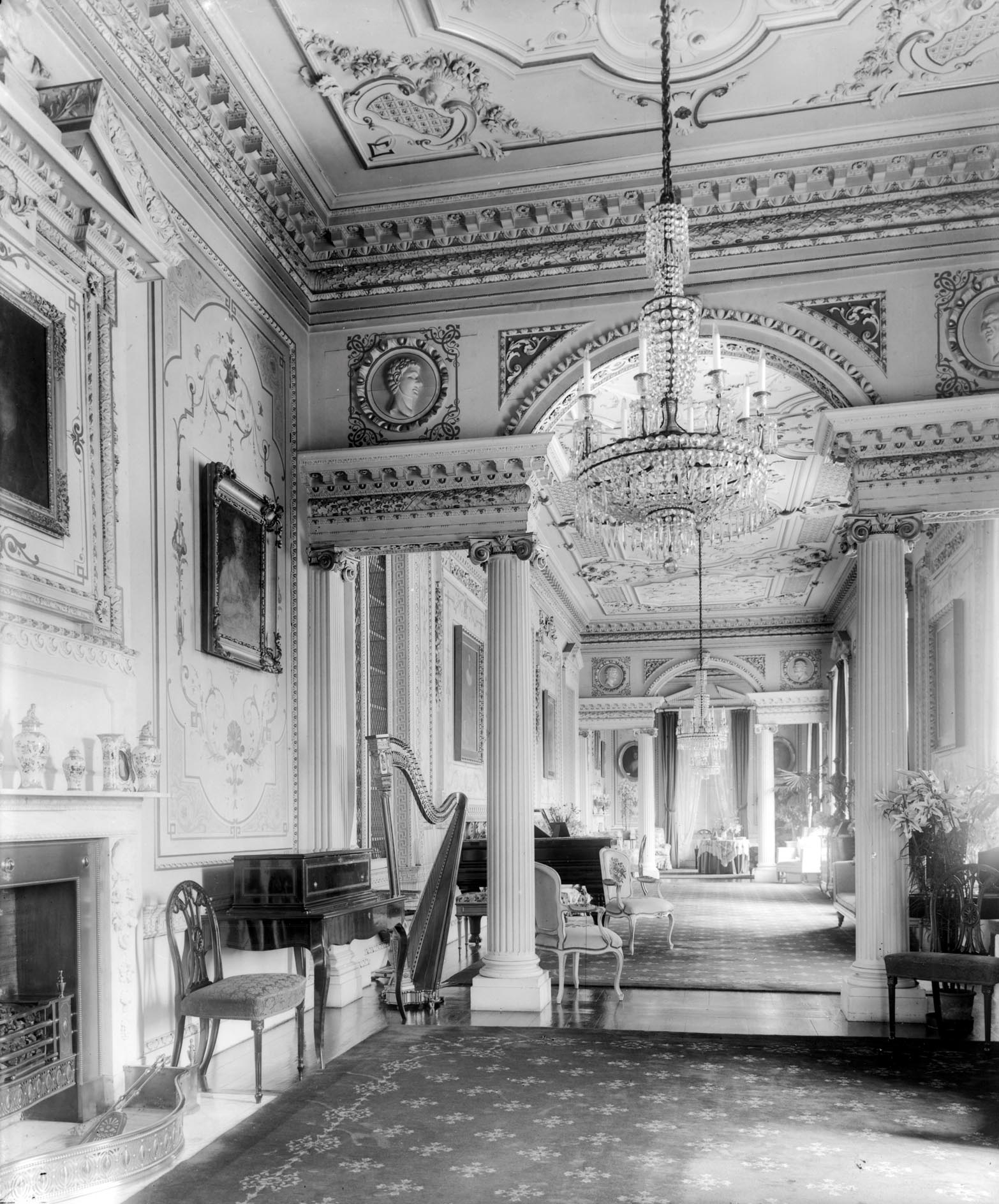
These are understated furnishings of the very highest quality. Now that the school has moved, it is to be hoped that they are cherished and, where appropriate, find a suitable future use. Thompson’s most important legacy at Gilling, however, is the spectacular Tudor great chamber, to which we will turn our attention next week.
Acknowledgements: Richard Hewlings, Fr Edward Corbould and Fr Anselm Cramer
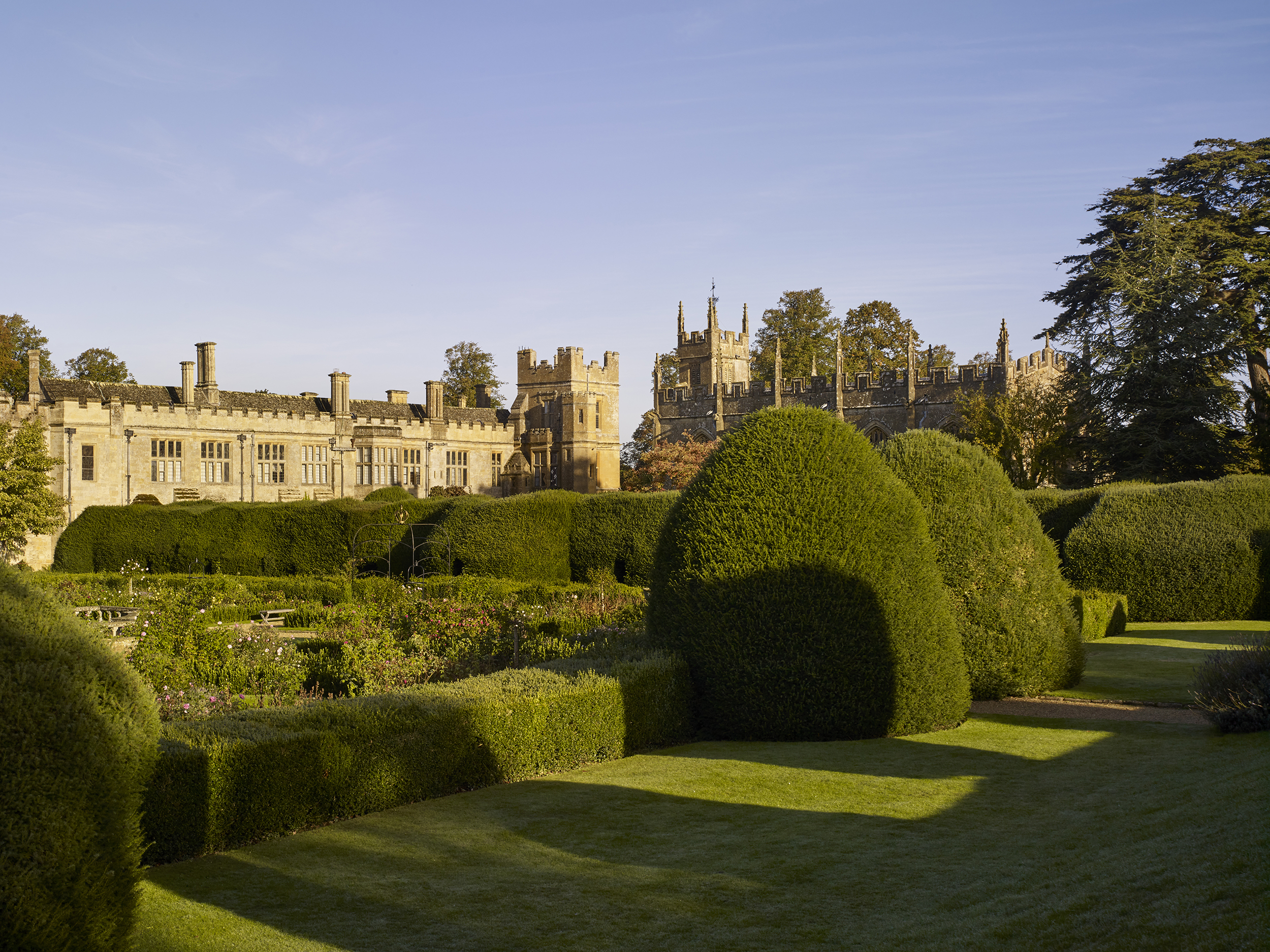
The salvation of Sudeley Castle: How one of the finest castles in the Cotswolds was saved from ruin
John Goodall delves into the later centuries of Sudeley Castle's existence, telling the story of its revival as a shrine
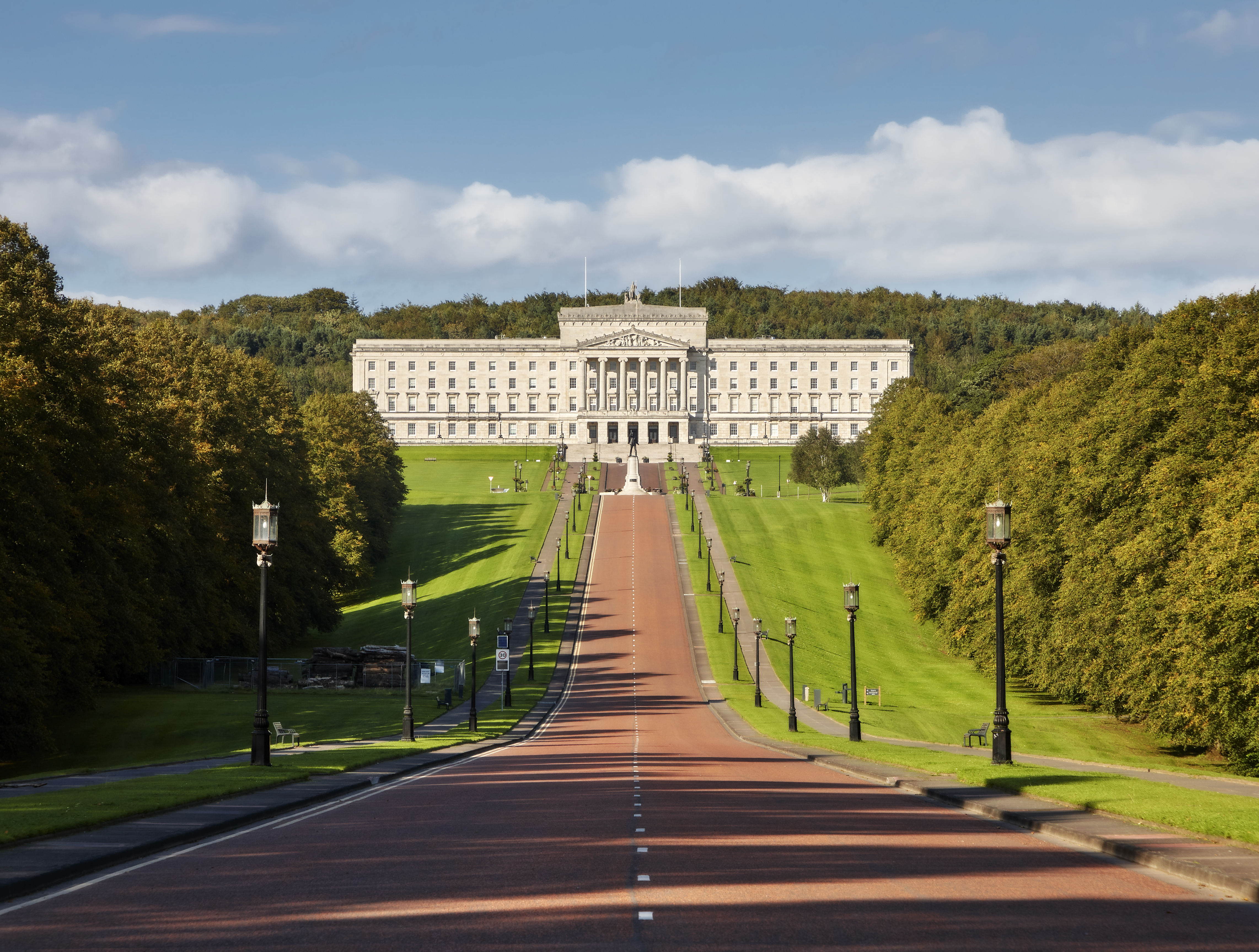
Stormont Castle: How a 'plain house' in Belfast became the seat of power
A century ago, the Stormont estate was chosen as the seat of the government of Northern Ireland. In the first
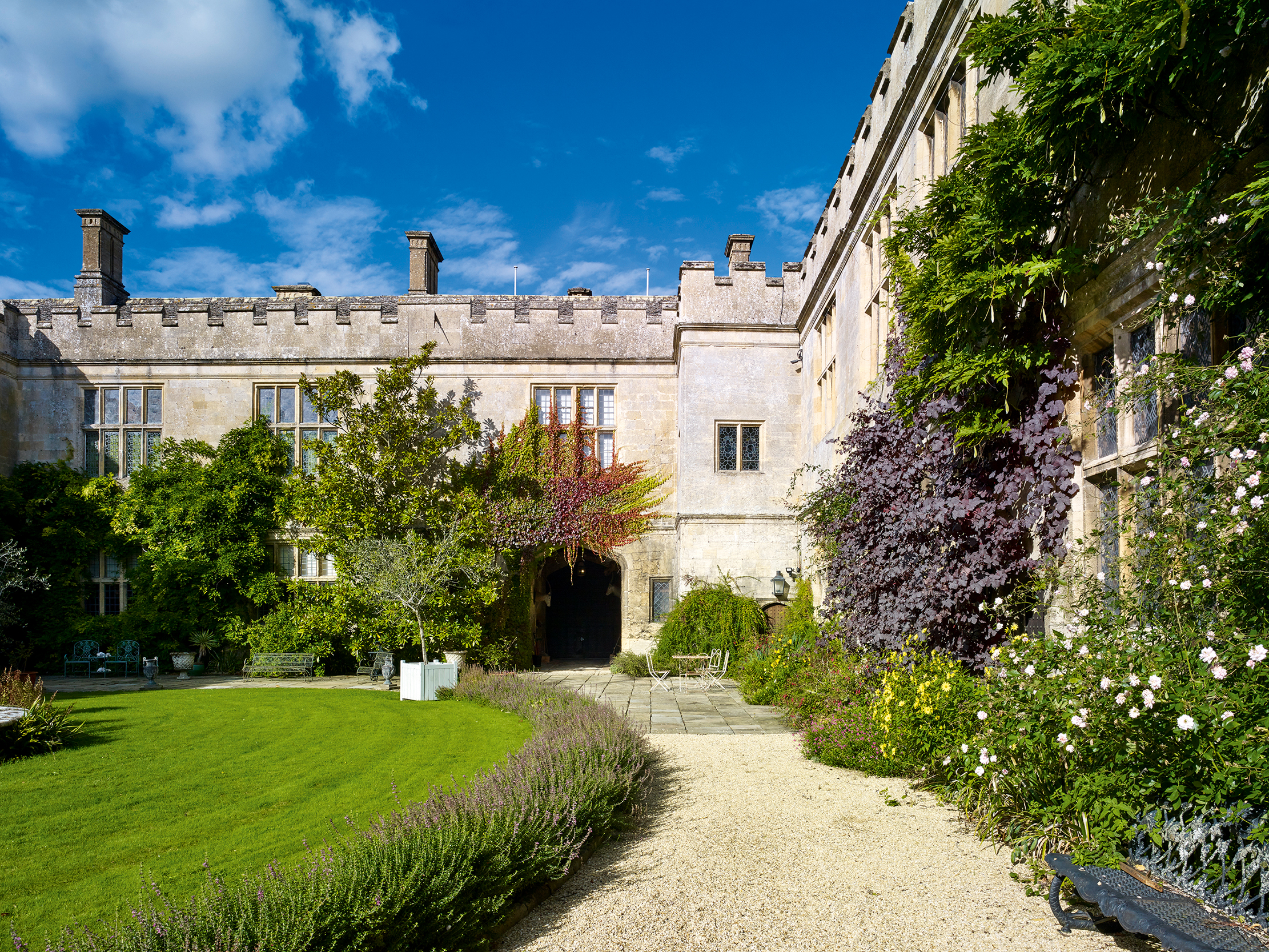
Sudeley Castle: The tumultuous tale of one of the finest castles in the Cotswolds
John Goodall tells the story of Sudeley Castle, Gloucestershire, and explains how a soldier — probably with the help of

John spent his childhood in Kenya, Germany, India and Yorkshire before joining Country Life in 2007, via the University of Durham. Known for his irrepressible love of castles and the Frozen soundtrack, and a laugh that lights up the lives of those around him, John also moonlights as a walking encyclopedia and is the author of several books.
-
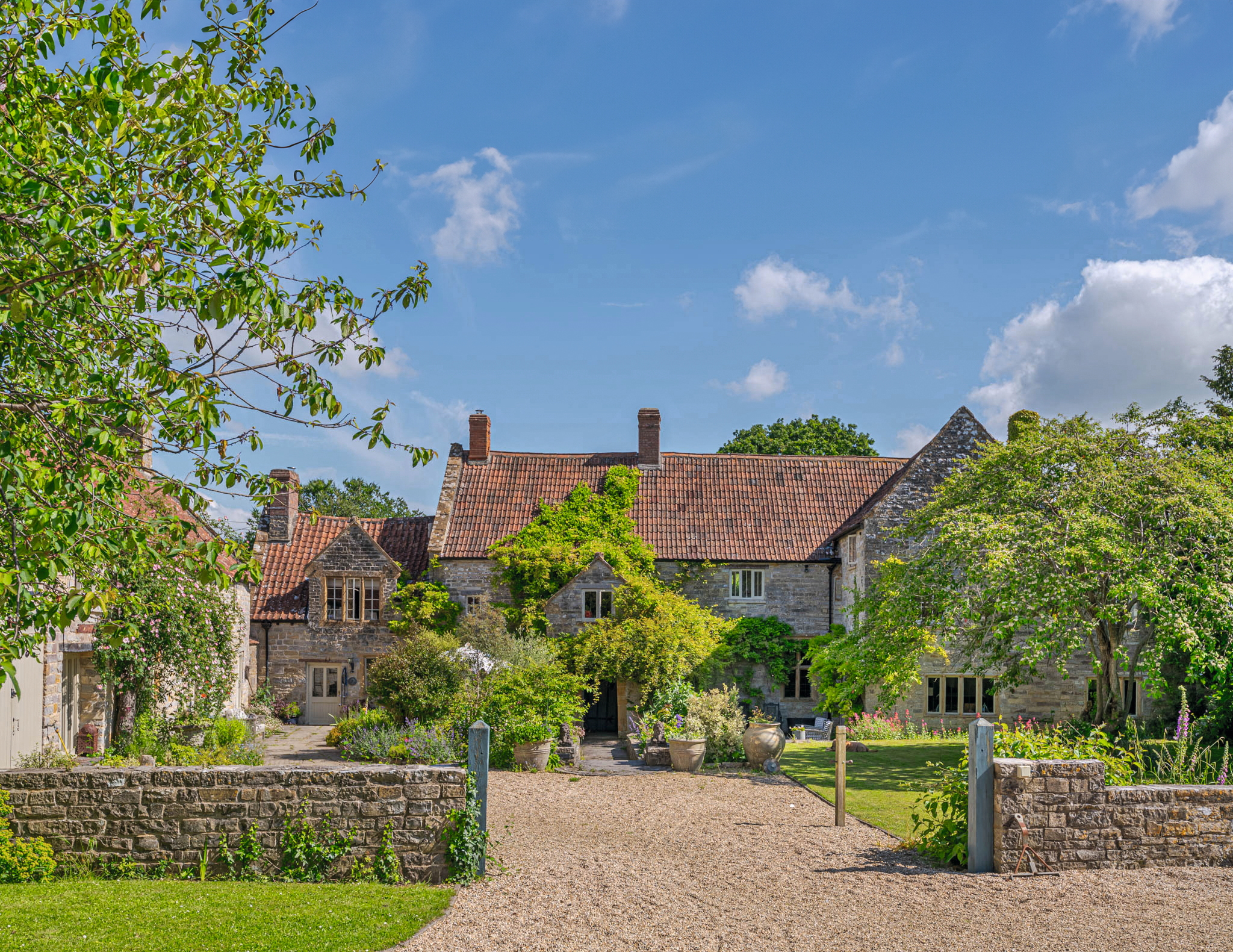 A Grade II*-listed country manor with one of the most beautiful drawing rooms in England
A Grade II*-listed country manor with one of the most beautiful drawing rooms in EnglandIf Old Manor Farm in Somerset is good enough for Pevsner, it's good enough for you.
By Penny Churchill Published
-
 School dinner puddings, Scrabble tiles and Antonio Banderas: Country Life Quiz of the Day, April 11, 2025
School dinner puddings, Scrabble tiles and Antonio Banderas: Country Life Quiz of the Day, April 11, 2025Friday's quiz asks you to name one of Britain's most beautiful places, and ponders the distance of a marathon.
By Toby Keel Published